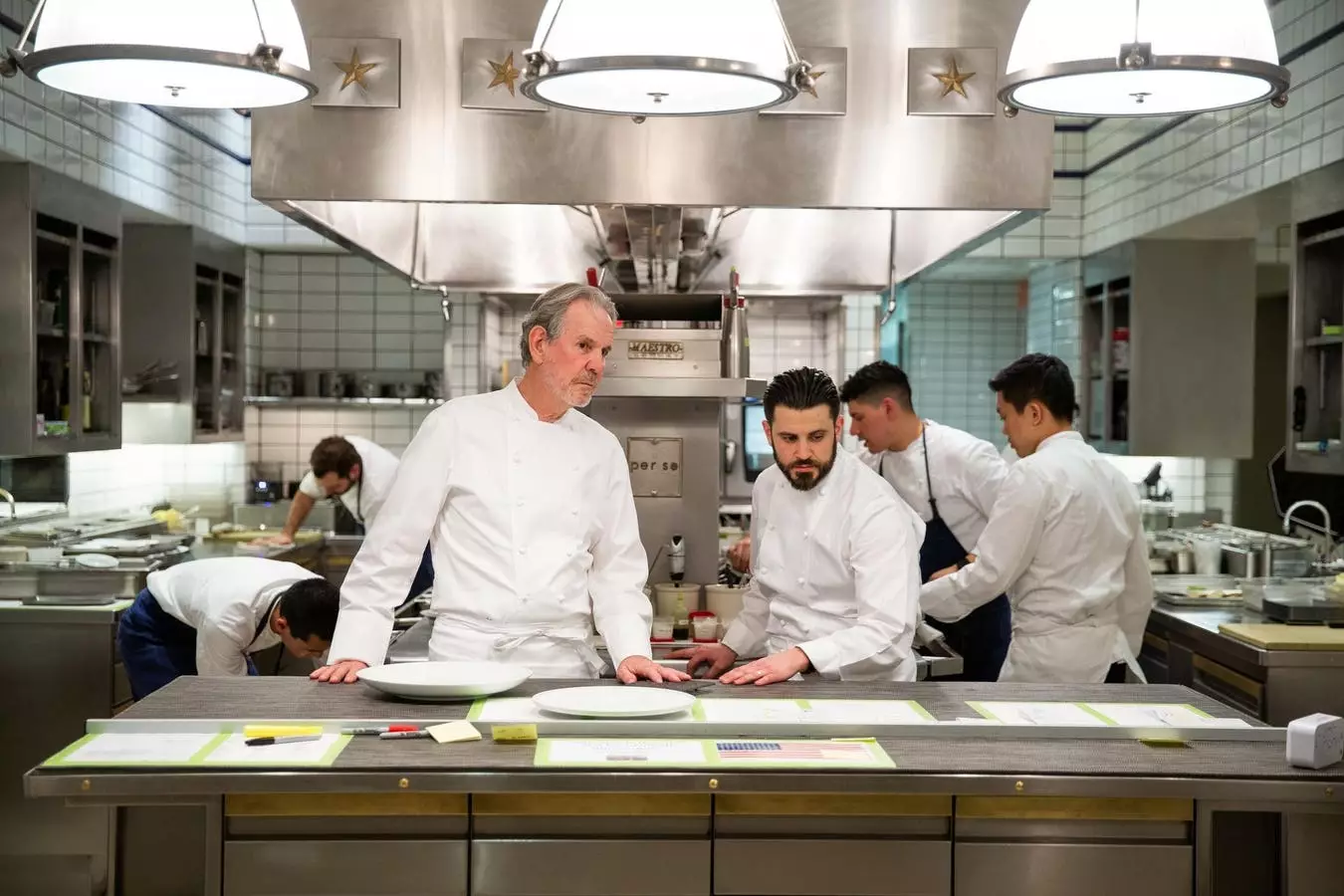Nestled atop the Deutsche Bank Center in Manhattan’s vibrant Columbus Circle, Per Se stands as a beacon of culinary artistry, tirelessly maintained by renowned chef Thomas Keller of The French Laundry fame. Since its doors opened in 2004, Per Se has garnered acclaim, most notably lauded by The New York Times shortly after its inception. With an uninterrupted streak of three Michelin stars since 2006, it’s an establishment synonymous with luxury dining in New York City. However, the restaurant finds itself at a crossroads, facing scrutiny for its opulent pricing and ambiance that some critics deem outdated. At $925 per person for the Chef’s Tasting menu, the question arises: is such a decadent experience still relatable to the everyday diner, or has it become an elite enclave unattainable for the average enthusiast?
The Dichotomy of High Standards and Accessibility
While Keller’s innovative culinary vision unquestionably dazzles, an unsettling narrative challenges its accessibility. The high costs associated with dining at Per Se have positioned it squarely within the realm of the top-echelon elite, causing some food critics to voice concerns that this lofty price doesn’t reflect the evolving tastes or values of a broader audience. This sentiment resonates particularly loudly in today’s climate, where discussions around equity and inclusivity in fine dining are gaining traction. How can a restaurant celebrated for engineering exquisite culinary experiences simultaneously resonate with a diverse clientele?
Yet, Per Se’s ability to foster an environment that nurtures talent and maintains staff loyalty speaks volumes about its internal culture. Despite the competitive nature inherent within this sphere—characterized by a staggering 79.6% turnover rate in the restaurant industry since 2013—many of Per Se’s employees have found meaningful longer-term careers. A significant portion of the 112-person team boasts over five years in service, indicating a compelling commitment to retaining talented individuals.
Crafting a Unique Experience Through Mentorship
The stories of resilience and growth among its staff are testaments to Per Se’s seriousness about mentorship. For instance, Kimberly Suzuka’s journey from lead host to guest relations manager epitomizes the horizontal growth one can experience within the establishment. Her ascent illustrates the organization’s commitment to forging professional paths that are both rewarding and enriching. The value placed on internal development is further embodied by the narratives of fellow kitchen professionals who have enjoyed promotions based more on skill acquisition than mere tenure. Pastry chef Elaine Smyth describes her transition from chef de partie to pastry sous chef as largely facilitated by informal mentorships and hands-on Iearning approaches.
While formal training can be beneficial, it’s this type of experiential learning that cements culinary knowledge in ways that classroom settings often can’t replicate. Smyth’s experience also reflects a broader trend within Per Se—the restaurant offers what can be best described as a graduate school for aspiring chefs, ensuring that up-and-coming culinary talent receives vital exposure to various industry facets.
Unified Communication as a Core Principle
At Per Se, the rigorous attention to communication is not merely an afterthought but rather a foundational principle that guides kitchen operations. The menu changes nightly, dictated by the seasons and the quality of available ingredients. This necessitates meticulous communication among chefs concerning ingredient sourcing, preparation techniques, and the integration of flavors. Chad Palagi, the chef de cuisine, articulates this process, acknowledging the challenges yet emphasizing the rewarding nature of crafting delicious plates under constantly evolving circumstances.
Moreover, the integration of vendors into staff training serves to deepen the culinary team’s understanding of the ingredients they work with, allowing them to develop a more resonant connection to their craft. Such immersive learning experiences reinforce a collective pride in the work produced. The notion of tasting and discussing new dishes as a cohesive unit is not just about maintaining quality; it encapsulates the essence of teamwork and unity that Per Se fosters, setting it apart from less communal culinary experiences.
Balancing Rigorous Standards with Continuous Learning
The finely-tuned environment constructed within the heart of Per Se, with its high standards personified in motivational directives like “Sense of Urgency” and the definition of “finesse,” encapsulates the delicate balance of expectations and the pursuit of excellence. General manager Sandra Bohlsen openly acknowledges the challenges she faces, engaging in a perpetual learning journey that forces her outside her comfort zone while navigating the complexities of this elite eatery. Each individual in the establishment plays a crucial role, with the cumulative effect creating a hallmark experience for diners.
In the ever-evolving culinary landscape, Per Se remains steadfast in its quality while simultaneously grappling with the dilemma of relevance in a rapidly changing world. Through their efforts to maintain unity among staff and continuously raise the bar of what fine dining can accomplish, they carve out a contemporary space that honors their legacy while addressing the needs of the modern diner.


Leave a Reply